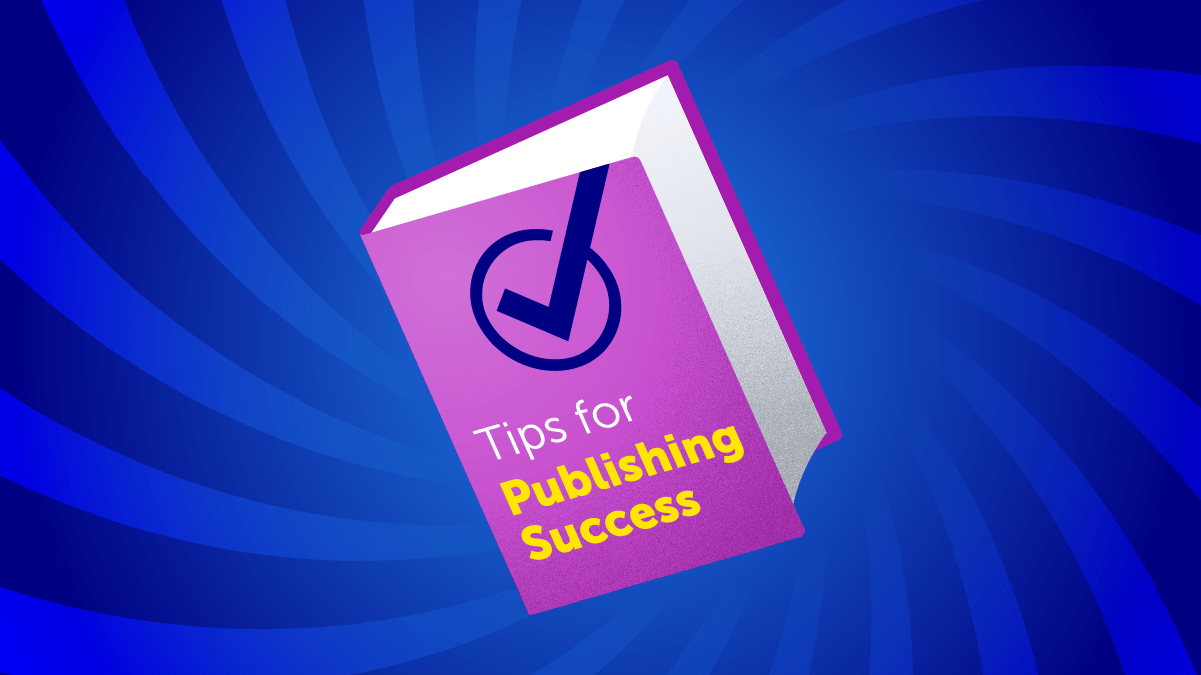6 Tips for Self-Publishing Success
Are you an entrepreneur? Maybe you’ve got a topic you know well and maintain a blog. Or perhaps you’ve got an established audience and you’re looking for a new way to create revenue. If one of those descriptions sounds like you, these publishing tips will help take you over the biggest hurdles to adding a book to your offerings.
Why Publish a Book?
If you’ve got an audience, you should offer them a book.
The image of an author we tend to foster portrays a bookish type who stares off into the distance and stays up late. But today it’s easier than ever to self-publish a book. The catch is that self-publishing is only profitable if you have an audience.
So yes, if you’re a stargazer who just wants to tell their story, self-publishing is for you. But if you want to sell that book, you need to bring an audience.
That’s why it’s standard practice for entrepreneurs to publish a book (or two or three). Books are a reliable source of income. They allow you to share your knowledge and establish yourself as an expert.
Getting there requires writing a good book. These self-publishing tips will help you start selling your book faster.
Self-Publishing Tip #1: Focus on One Topic
Your book has to have focus. Luckily, there’s a productive way to find a topic for your book; start blogging.
Seriously, if you run a website selling products or services you need to be blogging about it. Developing a strategy to write about your products naturally leads to research around topics and keywords. As you write more and you start pointing your audience to your blog posts, you might see that a few posts stand out.
For example, let’s say you sell bike parts and run a local repair shop for bikes. So you blog about a variety of bike repair and cycling topics. But one post about custom paint jobs had a ton of attention.
Maybe you could write a long-form guide on painting a bike and sell it as a book? If people are interested in the topic, there’s a good chance they would be willing to pay for it. But you can’t just write a general book about bikes. That kind of book will get lost in a sea of other books about bikes.
Self-Publishing Tip #2: Write for Your Readers
You know who your readers are because they’ve been reading your blog posts. Those blog followers are the perfect opportunity to learn about the kinds of people who will read your book. Do they like shorter lists that get right to the point? Or do they prefer longer reads that delve into the history of a topic? Do they digest your content better through images?
When you write for your readers, you’re making the best effort you can to ensure they’ll enjoy reading your book. And if they love your book, you can make a safe bet they’ll come back for your next book too!
Knowing what your readers like and expect can help your editor too. They can adjust their critique to suit the readers you’re anticipating.
Self-Publishing Tip #3: Hire a Book Editor
I said it earlier too, but it’s worth repeating; you have to offer a good book. You can probably get away with Grammarly for your blog, but your book needs a professional editor. I cannot stress enough how important and worthwhile it is to have your book edited. Your audience will overlook some spelling errors, maybe the occasional run-on sentence. But if the book is inconsistent or organized poorly, readers will put it down.
What I recommend to everyone self-publishing is to do a round of self-editing like you would with a blog post. Then get a few people to read it and do another round of editing based on their feedback. Finally, get that version over to a professional editor to clean up and finalize your manuscript.
Self-Publishing Tip #4: Connect Directly With Readers
You’ve already got customers buying your products or services. And you’re blogging regularly to establish what your customers want to read. You’ve done so much work already. Why would you send your customers to a retail site to buy your book? Not only do you lose revenue on that sale, but you also lose the opportunity to add that customer to your mailing list and you give a cut of your profit to the retailer.
Modern ecommerce platforms like Shopify, WIx, WooCommerce, and Square make it easy and affordable to offer secure transactions on your own website. So why not sell the books directly to your readers?
You can take advantage of our Shopify, Wix, and WooCommerce integrations to build print-on-demand into your existing shop. When you sell directly to your audience, you keep all the profits and control their experience. Most importantly, you can gather information about what they buy.

Sell Your Book, Your Way
Sell books on your Wix, Shopify, or WooCommerce website with Lulu Direct.
Or use our Order Import tool for your next book launch.
Self-Publishing Tip #5: You Need a Marketing Strategy
This one should come naturally if you’re already running a web store. Just as you market your other products, you’ll want to develop campaigns for email and social media to help let readers know your book is available.
There isn’t anything tricky about marketing your book—you’ll follow largely the same pattern you would use to market your other products or services. The key difference will be an emphasis on you and the book’s topic. Remember that a book is about selling more than just a product. Your book is also a tangible representation of your knowledge.
So you’ll probably find you need to lean into your brand and establish yourself as an expert in your field. The book you’re selling is just an extension of that expertise. If your audience already trusts you (or the products/services you already offer), you’ll find your marketing efforts are made easier because you’ve already established your expertise.

Your Free Lulu Account
Create a Lulu Account today to print and publish your book for readers all around the world
Self-Publishing Tip #6: Analyze Your Data and Adapt Your Strategy
Finally, it all boils down to the data. But you probably already know that.
For your book, the key will be creating good metadata to surround your book and track your audience’s interest. That might mean follow-up campaigns to request a review or directly asking readers for testimonials.
You’ll also do all the normal tracking using tools like Google Analytics to understand how your audience is finding the book. But again, this kind of data gathering should be built into your web store already.
It’s the granular information from actual readers you need for your book. This kind of information (Was the pacing good? Did the chapters flow together? Was the tone readable? etc.) will inform your next book. Or hell, this is self-publishing. If you put out a book and your most dedicated fans read it and report back that it’s too long or missing a section or lacking images, GO BACK AND REVISE IT.
Seriously, release a second edition. Or an ‘updated’ version. It’s your book and it’s for your fans—so give them what they want!
Self-Publishing Like an Entrepreneur
Whether you’re dedicated to selling a unique product or you provide services for customers, you can utilize a book to reach and expand your audience. Treat your book like a product; develop it based on your audience’s interests and refine it based on customer feedback.
Over time, you can grow your catalog to offer more books on more niche topics that interest your audience. And just like that, you’ll have a new product line to bring to market alongside your other products or services.




